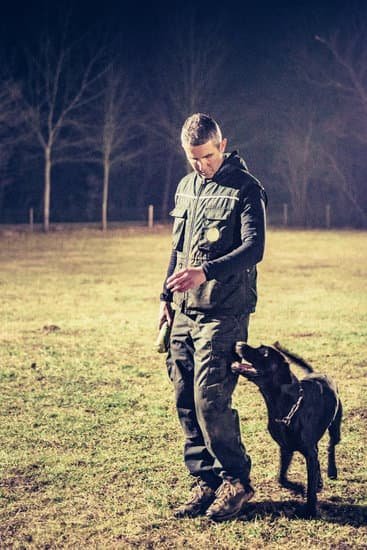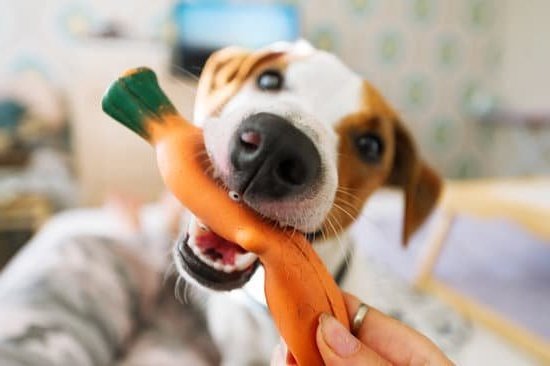Training your dog to grab the leash is an essential skill that every dog owner should prioritize. In this article, we will explore the benefits of a well-behaved dog and understand why training them to grab the leash is crucial. We will also delve into the basics of leash training and provide guidance on how to prepare your dog for successful training sessions.
A well-trained dog not only brings convenience to your daily life but also ensures their safety and the safety of others. Training your dog to grab the leash allows you to have better control during walks and outings, preventing any potential accidents or unwanted behavior. Additionally, a trained dog is more likely to listen and respond to commands, making them a joy to be around both at home and in public settings.
Understanding leash training basics is key to effectively train your dog. We will discuss common challenges owners face during leash training and emphasize the importance of building a positive association with the leash. By creating a positive experience around the use of the leash, you can establish trust with your furry companion and facilitate smoother training sessions.
Before diving into specific techniques, it is crucial to prepare your dog for leash training. This involves assessing their current behavior and readiness for training, gathering essential equipment needed for leash training success, and creating a calm and focused environment for learning. By taking these steps, you set yourself and your dog up for success as you embark on this important journey together.
Now that we’ve established the significance of a well-trained dog and discussed the essentials of pre-training preparations, let’s delve deeper into teaching your four-legged friend how to associate grabbing the leash with positive experiences.
Understanding Leash Training Basics
Leash training is an essential part of owning a dog. It allows you to have control over your pet while ensuring their safety and the safety of others around them. However, many dog owners face challenges when it comes to leash training their furry friends. Understanding the basics of leash training is crucial for a successful and positive experience for both you and your dog.
The purpose of leash training goes beyond just going for walks. It teaches your dog self-control, boundaries, and how to respond appropriately to various situations. Leash training also helps prevent pulling, lunging, or other undesirable behaviors when out in public. By teaching your dog to walk calmly on a leash, you can enhance their overall obedience and ensure their safety in different environments.
Common challenges that owners often face during leash training include pulling on the leash, excessive excitement or fearfulness, and difficulty walking calmly alongside their owner. These challenges can arise due to a variety of factors such as lack of previous training or negative experiences associated with leashes. Therefore, building a positive association between your dog and the leash is essential to overcome these challenges.
When preparing your dog for leash training, it’s important to assess their current behavior and readiness for training. Every dog is unique, so understanding their temperament and any behavioral issues they may have will help tailor the training approach accordingly. Additionally, gathering the necessary equipment such as a properly fitting collar or harness, a suitable leash length, and treats for rewards will help set you up for success.
Establishing a calm and focused environment before starting leash training is critical. Minimize distractions by choosing a quiet space where your dog feels comfortable and at ease. Practice simple commands like sit or stay to promote focus before introducing the concept of the leash itself. By creating this calm atmosphere from the beginning, your dog will be more receptive to learning new behaviors during the training process.
Preparing Your Dog for Leash Training
Assessing your dog’s current behavior and readiness for training
Before beginning leash training, it is important to assess your dog’s current behavior and readiness for training. Every dog is unique, and their temperament, age, and previous experiences can all impact their ability to learn and respond to leash training. Start by observing how your dog behaves in various situations and around other dogs or people.
Are they easily distracted? Do they have a tendency to pull on the leash? Understanding your dog’s behavior will help you tailor the training approach to their specific needs.
Essential equipment needed for leash training
To prepare for leash training, you will need a few essential pieces of equipment. Firstly, invest in a well-fitting collar or harness that is comfortable for your dog. It is important to choose a collar or harness that does not cause any discomfort or restrict their movement. Another crucial piece of equipment is the leash itself. Look for a lightweight but durable leash that allows you to maintain control without causing strain on your own arm or shoulder.
Additionally, consider using treats or toys as rewards during training sessions. These can be used as motivation for your dog and reinforce positive behaviors. Treat pouches are also handy tools to keep treats readily available during walks or training sessions.
Establishing a calm and focused environment for training
Creating a calm and focused environment when starting leash training is vital for ensuring successful outcomes. Minimize distractions as much as possible so that your dog can focus solely on the task at hand. Choose a quiet area indoors or outdoors where there are minimal sights, sounds, and smells that may divert their attention.
Start each session with some basic obedience commands such as sit or stay to establish control over your dog before introducing the leash. This will help them understand that you are in charge during the training session.
Lastly, remember to set aside dedicated time for training sessions, ensuring that you are calm and patient. Dogs can pick up on human emotions, so it is important to maintain a positive and relaxed attitude during training. This will help your dog feel safe and confident, setting the stage for successful leash training.
Teaching Your Dog to Associate the Leash with Positive Experiences
Teaching your dog to associate the leash with positive experiences is a crucial step in leash training. By creating positive associations with the leash, you can help your dog feel comfortable and eager to engage with it. Here are some steps and techniques to accomplish this:
- Introducing the leash in a non-threatening manner: Start by allowing your dog to simply sniff and investigate the leash without any pressure or tension. This will help them form positive associations with its presence. Gradually increase their exposure to the leash by leaving it near their bed or toys.
- Reward-based training techniques: Positive reinforcement is key when teaching your dog to associate the leash with positivity. Use treats, praise, and affection to reward your dog every time they show interest in or interact with the leash. This will help them understand that good things happen when they engage with it.
- Gradually increasing duration of leash interaction: Once your dog is comfortable with the presence of the leash, begin gradually introducing more interaction. Encourage them to touch or hold onto the leash for short durations, rewarding them each time they do so successfully. Over time, increase the duration they hold onto it before providing rewards.
To summarize, teaching your dog to associate the leash with positive experiences involves introducing it in a non-threatening manner, utilizing reward-based training techniques, and gradually increasing their interaction with it. By following these steps and being patient with your furry companion, you can help them develop a positive association with the leash, making future training much easier.
Step-by-Step Guide to Teaching Your Dog to Grab the Leash
Building Trust and Engagement with Your Dog
Before teaching your dog to grab the leash, it is essential to establish a strong bond built on trust and engagement. Dogs are more likely to respond positively to training when they feel secure and connected to their owners. To build trust, spend quality time engaging in activities that your dog enjoys, such as playtime or gentle grooming sessions. This will help create a positive association with you and make the training process smoother.
Teaching Your Dog the “Grab” Command
Once your dog feels comfortable and trusts you, you can begin teaching them the “Grab” command. Start by presenting a toy or object that your dog enjoys playing with, such as a favorite plush toy or a soft rope. Hold the object out towards your dog and when they show interest or attempt to grab it, use a verbal cue like “grab” or “take it.” When they successfully grab onto the object, reward them immediately with praise and treats.
Repeat this exercise multiple times until your dog starts associating the verbal cue with grabbing onto the object. Gradually transition from using toys to using the leash itself as the object of interest. Eventually, your dog will learn that “grab” means grasping onto the leash.
Rewarding Your Dog for Grabbing the Leash
To reinforce the desired behavior of grabbing the leash, reward your dog every time they do so successfully. Treats are an effective form of positive reinforcement during this stage of training. Whenever your dog grabs onto the leash in response to your verbal cue, immediately praise them enthusiastically and offer them a tasty treat.
Consistency is key here – continue practicing this exercise regularly until your dog consistently grabs onto the leash when given the command. Over time, you can gradually reduce treats as rewards and rely more on verbal praise and petting instead.
By following this step-by-step guide, you can effectively train your dog to grab the leash on command. Remember to be patient, consistent, and always use positive reinforcement techniques during the training process. With time and practice, your dog will become comfortable with the concept of grabbing the leash and look forward to going on walks with you.
Troubleshooting Common Challenges
Leash training can sometimes come with its own set of challenges. Just like with any type of training, it’s important to be patient and understanding as you work through these obstacles. Here are some common challenges that dog owners may encounter during leash training and how to address them:
- Overcoming resistance or fear of the leash: Some dogs may initially have a negative association with the leash, which can make it difficult for them to feel comfortable grabbing it. To overcome this challenge, start by introducing the leash in a non-threatening manner. Lay it on the ground and let your dog sniff and investigate it at their own pace.
Gradually progress to holding the leash while offering treats or engaging in playtime with your dog nearby. This helps create positive associations with the presence of the leash. - Dealing with dogs who grab the leash too aggressively: While teaching your dog to grab the leash is important, it’s equally important to ensure they do so in a controlled manner. If your dog tends to grab the leash too aggressively or roughs around with it, redirect their attention by asking them to “leave it” or “drop it.” Encourage them to grab the leash gently by rewarding calm behavior whenever they interact with it.
- Handling dogs who exhibit leash aggression: Leash aggression is a common challenge faced by many dog owners during walks. If your dog becomes aggressive or reactive while on a leash, seek professional help from a certified trainer or behaviorist who specializes in dealing with aggression issues. They will be able to provide tailored guidance and techniques to manage and address this specific challenge.
Remember, every dog is unique, and what works for one may not work for another when addressing these common challenges. Patience, consistency, and positive reinforcement are key throughout the troubleshooting process.
Resources for Additional Help
If you find yourself struggling with any of these challenges or have questions, it can be helpful to seek additional guidance. Here are some resources that may be beneficial:
- Enroll in a local obedience training class: A professional trainer can provide hands-on guidance and support as you work through leash training challenges. They will also be able to offer personalized advice based on your dog’s specific needs.
- Consult a certified dog behaviorist: If you’re dealing with more severe behavioral issues, such as leash aggression, it’s recommended to consult with a certified dog behaviorist. They have specialized knowledge and expertise in addressing complex behavioral challenges.
- Join online communities or forums: Online communities and forums dedicated to dog training can be a valuable resource. Connect with other dog owners who may have faced similar challenges and can offer advice and support based on their own experiences.
Remember, troubleshooting common challenges during leash training is a normal part of the process. Don’t get discouraged if progress takes time – each small milestone achieved is a step in the right direction toward having a well-trained and obedient furry companion.
Gradually Transitioning to Leash Walking
Once your dog has become comfortable with grabbing the leash on command, you can begin to transition into leash walking. Gradually introducing this new step will help ensure a smooth and enjoyable experience for both you and your dog.
To start, incorporate the act of grabbing the leash into your regular walking routine. Begin by having your dog grab the leash inside your home or in a familiar and calm outdoor environment. Give the “Grab” command, and when your dog picks up the leash, reward them with treats and praise. Repeat this process multiple times until your dog consistently grabs the leash upon command.
Once your dog is consistently grabbing the leash inside or in calm outdoor areas, gradually move to more challenging environments. Start by practicing in areas with mild distractions such as a quiet park or an empty sidewalk. As your dog becomes more comfortable, increase the level of distractions gradually.
During these practice sessions, it’s important to encourage loose leash walking. Teach your dog to walk beside you without pulling or lunging by using reward-based training methods. Whenever they maintain a loose leash, reward them with praise and treats. If they pull or lunge, stop immediately and wait for them to return to a relaxed state before continuing.
Consistency is key during this stage of training. Aim for regular practice sessions each day to reinforce good habits and help build muscle memory for both you and your dog. Be patient and remember that each dog learns at their own pace – some may catch on quickly while others may require more time and repetition.
By gradually transitioning into leash walking, you can set both you and your furry companion up for success in enjoying walks together. With consistency, patience, and positive reinforcement techniques, you’ll be able to enjoy leisurely strolls without worrying about pulling or other unwanted behaviors from your well-trained canine companion.
Maintaining Leash Training Success
Consistency and reinforcement are key to maintaining leash training success with your dog. Once you have successfully taught your dog to grab the leash, it is important to continue practicing and reinforcing the behavior to ensure that it becomes a reliable command for your furry companion. This section will provide tips and strategies for maintaining leash training success.
One of the most important factors in maintaining leash training success is consistency. Dogs thrive on routine, so it is crucial to continue practicing the grab command regularly with your dog. Set aside dedicated training sessions each day where you work on leash grabbing and reinforce the behavior with rewards. Consistency not only helps strengthen the bond between you and your dog but also helps maintain their understanding of what is expected of them.
Reinforcement is another vital aspect of maintaining leash training success. Continue to reward your dog every time they successfully grab the leash when commanded to do so. You can use treats, praise, or toys as rewards, depending on what motivates your individual dog. It is important to provide positive reinforcement consistently so that your dog associates grabbing the leash with a positive experience.
In addition to consistency and reinforcement, keep an eye out for any regression or issues that may arise during leash training. Some dogs may start to exhibit unwanted behaviors such as resisting or avoiding grabbing the leash. If this happens, go back to step one of introducing the leash in a non-threatening manner and gradually rebuild positive associations.
| Tips for Maintaining Leash Training Success |
|---|
| Consistency |
| Set aside dedicated training sessions each day |
| Continue practicing and reinforcing the grab command |
| Reinforcement |
| Continue to reward your dog every time they successfully grab the leash |
| Use treats, praise, or toys as rewards |
| Issues and regression |
| Watch for any regression or issues that may arise during training |
| If necessary, go back to step one and rebuild positive associations |
Conclusion
In conclusion, training your dog to grab the leash is an essential part of overall obedience training and can greatly benefit both you and your furry companion. By following the step-by-step guide outlined in this article, you can establish a positive association with the leash and teach your dog to grab it on command.
Investing time and effort into training your dog will result in a well-behaved pet who is a joy to be around. A dog who can confidently grab the leash on command shows trust, engagement, and understanding of their role during walks. This level of obedience not only makes daily activities more enjoyable but also strengthens the bond between you and your dog.
Remember that consistency is key in maintaining leash training success. Daily practice will reinforce good habits and prevent regression. Be patient with any challenges that may arise and seek proper guidance if needed. With dedication, patience, and love, you can continue reinforcing training and bonding with your furry companion for years to come.
Enjoy the benefits of a well-trained dog by investing in their training today. The ability to have a well-behaved dog who grabs the leash on command will make walks more pleasant, keep both you and your pet safe during outdoor activities, and enhance the overall quality of life for both of you. So keep up with the training process, enjoy the journey together, and reap the rewards of having a well-trained canine companion.
Frequently Asked Questions
How do you teach a dog to grab a leash?
To teach a dog to grab a leash, it is important to break down the training process into small steps. Start by introducing the leash and allowing the dog to sniff and investigate it without any pressure or expectation. Then, encourage the dog to touch the leash with its nose or paw by using treats or verbal cues.
Gradually progress towards asking the dog to open its mouth around the leash and hold it for a brief moment. Reward and praise the dog each time it successfully grabs and holds the leash, gradually increasing the duration of holding over time. Consistency, positive reinforcement, and patience are key in teaching a dog this skill.
What is the #1 trick to stop your dog pulling on the leash?
The #1 trick to stop your dog pulling on the leash is consistent loose leash training combined with positive reinforcement techniques. Begin by teaching your dog basic leash manners, such as walking calmly beside you without pulling. Use positive reinforcement like treats or praise whenever your dog walks politely without tension on the leash.
If your dog starts pulling, immediately stop walking and wait for them to come back to your side before continuing. Avoid jerking or yanking on the leash as this can create discomfort or even encourage more pulling behavior.
How do I teach my dog to pick up and hold?
Teaching a dog to pick up and hold objects can be accomplished through patient training and positive reinforcement methods. Start with an object that is easy for your dog to handle, such as a small toy or soft ball. Encourage your dog to approach the object by using verbal cues or directing their attention towards it with treats or toys.
Once they show interest in grabbing the object, reward them with praise or treats while they hold it in their mouth for a few seconds. Gradually increase the duration they hold it before giving them their reward. Practice this exercise regularly, gradually introducing different objects of varying sizes and textures, always reinforcing positive behavior with rewards and encouragement.

Welcome to the blog! I am a professional dog trainer and have been working with dogs for many years. In this blog, I will be discussing various topics related to dog training, including tips, tricks, and advice. I hope you find this information helpful and informative. Thanks for reading!





